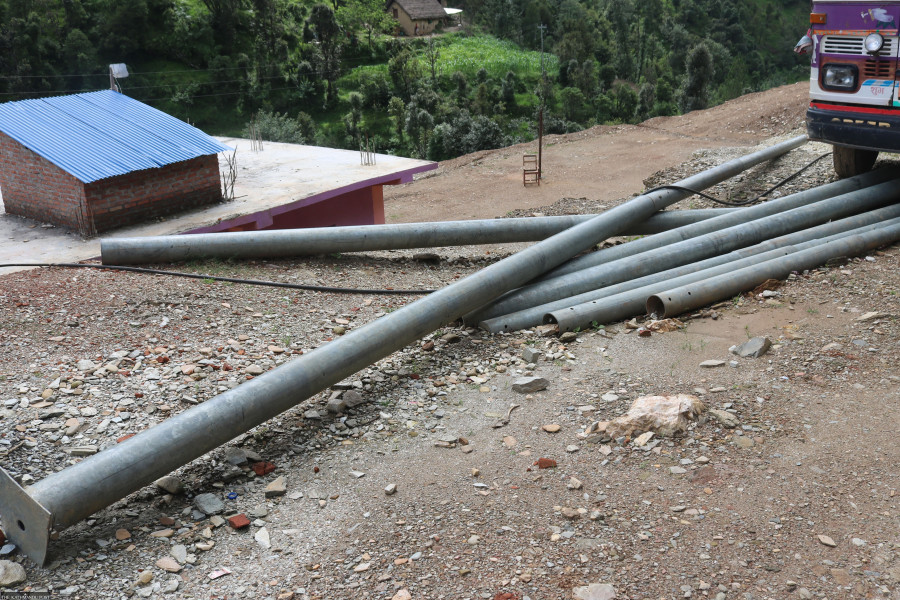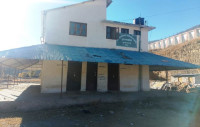Karnali Province
More than half of Salyan district still without electricity
Dozens of electrification projects have been left incomplete in most rural areas of the district.
Biplab Maharjan
More than half of the population in Salyan depend on kerosene lamps and pinewood for lighting up homes.
According to data from the Salyan Electricity Distribution Centre, out of 51,000 households in the district, 36,034 are still deprived of electricity. Only 14,966 households regularly use electricity in the district.
Five years ago, Nepal Electricity Authority had started the installation of utility poles in Putalibazar of Kalimati Rural Municipality. However, the installation works have come to a halt due to incomplete road networks in Putalibazaar.
Even the installation of electricity poles hardly ensures power supply as is the case with Malta in Bangadkupinde Municipality where electricity poles were installed two years ago but households are yet to be lit up.
Only the district headquarters, Khalanga, was supplied with electricity some 35 years ago. Dozens of electricity supply projects have been left unattended in most rural areas of the district for many years now.
Dipak Khadka, a resident of Okhareni which is yet to see electricity, said, “We have been demanding the government authorities supply electricity to our village for many years now but nothing has happened. We still use kerosene lamps and pine wood for lighting. We have spent our whole life waiting for electricity.”
According to him, a micro hydropower project, which was constructed five years ago in Okhareni, was damaged within a year of its operation.
Devilal Ghartimagar, a resident of Damdawali, Ward 5 in Kalimati Rural Municipality, said, “Using kerosene lamps and pine wood for a long time has had adverse effects on our health. A majority of our elders in our village are patients of asthma and other respiratory diseases. Our children have to depend on kerosene lamps to study.”
According to Salyan distribution centre of the Nepal Electricity Authority, around 79 percent households in Kalimati, 75 percent each in Darma and Kumakh, 70 in Bangadkupinde, 60 in Bagchaur, 53 in Siddakumakh, 40 in Kapurkot and 15 percent each in Sharada and Tribeni are deprived of electricity in the district.
Dharmapati Yadav, chief at the distribution centre, said most of the electrification projects are left incomplete without funds. According to him, eight different projects were in operation with a Rs60 million budget issued in the fiscal year 2020-21.
“A total of 3,189 households benefited through six electrification projects last fiscal year,” claimed Yadav.
The Salyan office of NEA estimates that around Rs1.25 billion is needed to provide electricity for all the households in the district. “A huge amount of budget is required to accomplish a single project due to geographical remoteness and scattered settlements. But only Rs60 to Rs150 million is issued in one fiscal year,” said Yadav.
All 10 local units in Salyan have prioritised electrification for the past few years. According to Suresh Adhikari, mayor of Sharada Municipality, the local body issued a total of Rs30 million budget since the local government was formed in 2017. “Around 85 percent of households in Sharada Municipality have electricity connections now,” he said.
Bangadkupinde, another municipality in the district, spent Rs70 million to extend power supply in the past three years. Mayor Gobind Pun said the electrification programme was launched in Wards 1, 8, 9, 10 and 11 of the municipality last fiscal year.




 16.12°C Kathmandu
16.12°C Kathmandu










